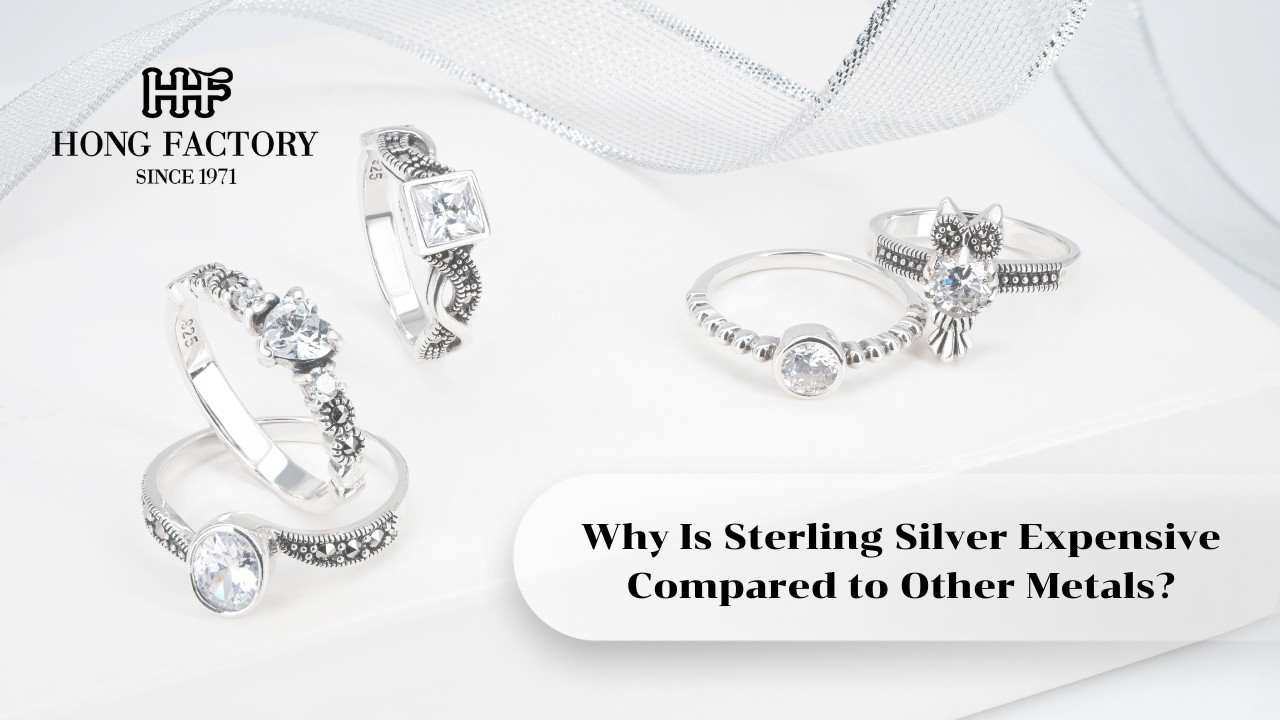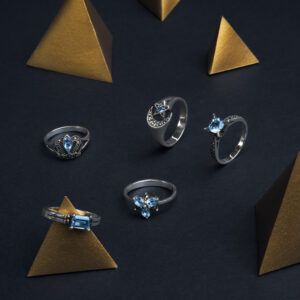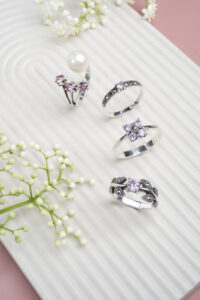
Why Is Sterling Silver Expensive Compared to Other Metals?
- by admin
Sterling silver has always been admired for its elegance, shine, and affordability, but many wonder why is sterling silver sometimes considered expensive compared to other metals? Despite being more affordable than gold or platinum, sterling silver stands apart from cheaper alternatives due to its quality, craftsmanship, and intrinsic value. This article explores what makes sterling silver jewelry valuable and why it continues to be a preferred choice for consumers seeking both beauty and longevity. Titanium earrings for sensitive ears
What Is Sterling Silver?

Sterling silver is an alloy consisting of 92.5% pure silver and 7.5% copper or other strengthening metals. This blend enhances silver’s durability without compromising its shine. Genuine sterling silver pieces are typically stamped with a “925” hallmark, which indicates their authenticity and purity.
Pure silver is too soft for everyday wear, so this combination ensures the metal remains strong enough to withstand years of use while preserving its brilliant luster. This balance between purity and strength makes sterling silver a high-quality material for fine jewelry, cutlery, and accessories.
Is Sterling Silver Expensive?
The question “Is Sterling Silver Expensive” depends on how it is compared. Sterling silver is more affordable than gold or platinum but pricier than stainless steel or brass. The higher price reflects its real metal content, skilled craftsmanship, and the long-lasting nature of sterling silver jewelry.
Factors that make sterling silver more valuable include:
- Purity and authenticity: With 92.5% pure silver, each piece has intrinsic value.
- Craftsmanship: Sterling silver jewelry often involves detailed hand-finishing, polishing, and gemstone setting.
- Durability: It can last for decades when properly cared for, unlike cheaper, plated metals.
- Hypoallergenic quality: Unlike nickel-based metals, sterling silver rarely causes skin irritation.
- Aesthetic appeal: Its cool tone and reflective surface make it a timeless fashion favorite.
Sterling Silver vs. Other Metals
To understand why sterling silver holds its value, it’s helpful to compare it with other commonly used metals:
- Stainless Steel: While strong and corrosion-resistant, stainless steel has no precious metal value. It lacks the shine and luxury appeal of sterling silver.
- Brass: Brass is inexpensive but tarnishes easily and can cause skin reactions due to its high copper and zinc content.
- Gold-Plated Jewelry: Though visually similar to fine jewelry, gold-plated pieces wear off over time, exposing base metals underneath.
- Platinum: Platinum is rarer and more expensive but often considered too costly for everyday jewelry.
Sterling silver sits comfortably between these extremes offering authenticity, style, and durability at a reasonable price.
The Role of Craftsmanship and Design

Another reason sterling silver commands a higher price than cheaper metals is the craftsmanship involved in creating fine jewelry. Skilled artisans use advanced techniques to mold, set, and polish silver into intricate designs. Each piece often undergoes multiple stages of hand-finishing, ensuring perfection in detail.
When gemstones such as marcasite, turquoise, or cubic zirconia are added, the design process becomes even more labor-intensive. This human touch elevates sterling silver jewelry beyond mass-produced metal accessories.
Maintenance and Longevity
Unlike many inexpensive metals that corrode or discolor, sterling silver can last a lifetime with minimal care. Regular cleaning with a soft cloth or silver polish helps maintain its shine. This longevity makes sterling silver a smart investment for consumers who value both beauty and practicality.
Even if tarnish occurs, it can be easily restored, unlike costume jewelry that loses its plating permanently. This sustainability aspect adds to its perceived value.
Why Customers Choose Sterling Silver
Consumers are willing to pay a bit more for sterling silver because it offers:
- Authenticity: Real silver content ensures quality and long-term value.
- Elegance: Its natural shine complements any gemstone or outfit.
- Versatility: Suitable for everyday wear or special occasions.
- Resale potential: Sterling silver retains value, unlike cheaper metals.
This combination of practicality and sophistication keeps sterling silver in high demand across global jewelry markets.
While sterling silver may seem more expensive than other metals, its value lies in its authenticity, craftsmanship, and longevity. It bridges the gap between luxury and affordability, offering real precious metal quality without the high cost of gold or platinum.
For anyone seeking timeless jewelry that combines elegance, durability, and genuine worth, sterling silver remains one of the best choices available. Its enduring beauty ensures it will never go out of style making every piece not just an accessory, but an investment in lasting elegance.
Sterling silver has always been admired for its elegance, shine, and affordability, but many wonder why is sterling silver sometimes considered expensive compared to other metals? Despite being more affordable than gold or platinum, sterling silver stands apart from cheaper alternatives due to its quality, craftsmanship, and intrinsic value. This article explores what makes sterling…